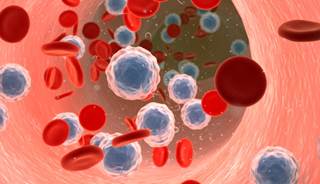
Diagnosed with Cancer? Your two greatest challenges are understanding cancer and understanding possible side effects from chemo and radiation. Knowledge is Power!
Learn about conventional, complementary, and integrative therapies.
Dealing with treatment side effects? Learn about evidence-based therapies to alleviate your symptoms.
Click the orange button to the right to learn more.
- You are here:
- Home »
- Blog »
- Multiple Myeloma »
- What African-Americans Need to Know about Multiple Myeloma
What African-Americans Need to Know about Multiple Myeloma

Incidence and mortality of multiple myeloma are 2-fold among Blacks than Whites…Age-adjusted incidence in African-Americans 9.5 per 100,000 per year and 4.1 per 100,00 per year in whites.
While multiple myeloma is a complex and incurable blood cancer it is not homogeneous in how it is studied, trialed and how it affects black, white and other patients. The list of statistics, facts, etc. below help to illustrate what African-American MMers need to know about their blood cancer.
I am both a long-term MM survivor and MM cancer coach. I work with MMers to identify evidence-based conventional (FDA approved) and non-conventional therapies. Please watch the free webinar linked to the right of this page. Scroll down the page to ask a question or make a comment. I will reply to you ASAP.
To Learn More about minority cancer issues- click now
Thank you,
David Emerson
- MM Survivor
- MM Cancer Coach
- Director PeopleBeatingCancer
Recommended Reading:
- Multiple Myeloma Diet- Organic vs. Conventional
- Myeloma Prognosis- Cytogenetics, Molecular Subtypes Explained
- Non-toxic Multiple Myeloma Therapies- Nutrition, Antioxidants, Anti-Angio
Racial Disparities in Incidence and Survival for Patients with Multiple Myeloma in the United States
“Using data from the National Cancer Institute, researchers examined differences in the incidence, mortality, and survival of 68,701 white, 16,364 black, and 4802 other patients with MM who were classified by race, sex, and age, from 1973 to 2012…”
Multiple myeloma
Dr. Stephen Cohen
“Have you ever wanted to read the notes and observations of a practicing compassionate and empathetic doctor who has cared for cancer patients for over 40 years? Wel, now you can! Dr. Stephen Cohen, a medical oncologist and hematologist practicing in San Antonio, Texas, has kept a daily journal of interesting medical info and tidbits he encounters day to day from his personal experiences with patient care, professional journals he reads, and medically relevant information on all subjects that he comes across.”
- Multiple Myeloma is projected to be the fastest rising hematologic cancer by 2030.
- Increasing numbers of patients with MM due to an aging population.
- Ranks as the 15th most common type of cancer in the United States
- Incidence and mortality 2-fold among Blacks than Whites.
- Age-adjusted incidence in African-Americans 9.5 per 100,000 per year and 4.1 per 100,00 per year in whites.
- Myeloma is twice as common in blacks compared with whites and this is due to a higher prevalence of monoclonal gammopathy of undetermined significance in blacks.
- Median age at diagnosis 65-70 years.
- The median age at death is 75 years, with mortality rate increasing as age increases.
- Fewer than 4% of patients younger than 45 years.
- 75% of men and 79% of affected women are older than 70 years.
- 37% of patients younger than 65 years of age.
- 26% are diagnosed by between ages 65 and 74 years.
- 37% 75 years or older at diagnosis.
- Survival varies depending upon a host of factors: the stage of disease, biology including cytogenetic abnormalities and response to therapy.
- Disease biology is reflected in the molecular subtype of myeloma and the presence or absence of secondary cytogenetic abnormalities.
- Unfortunately, approximately 25% of patients have a median survival of 2 years or less.
- There has been an increase in the incidence in patients younger than 55 years of age over the past several decades.
- Male to female ratio approximately 3 to 2.
- Does not occur in children.
- Evolves from a monoclonal gammopathy of undetermined significance (MGUS).
- Only 10% of patients with newly diagnosed myeloma have a history of pre-existing MGUS.
- MGUS almost always precedes myeloma.
- Smoldering myeloma is an intermediate stage between MGUS and myeloma is associated with a higher risk of progression of approximately 10% year.
- Chromosome abnormalities detected with cytogenetics or fluorescence in situ hybridization in more than 90% of cases and include deletions, trisomies, and translocations.
- Approximately 40% of cases characterized by trisomies it in the neoplastic plasma cells, while most of the rest have a translocation involving the immunoglobulin heavy chain locus on chromosome 14q32 (IgH translocated MM).
- A small proportion of patients have both trisomies and IgH translocation.
- Trisomies and IgH translocations are considered primary cytogenetic abnormalities and occur at the time of the establishment of MGUS.
- Secondary cytogenetic abnormalities arise during the disease include gains, deletions etc.
- At least 50% of patients with clonal plasma cell proliferation in monoclonal gammopathy of unknown significance (MGUS) translocations involving the immunoglobulin heavy chain (IgH) locus on chromosome 14q32 evolve into myeloma.
- Hyperdiploidyand IgH translocations are early events in disease pathogenesis, and del(17p13) and translocations of MYC locus are late events.
- Patients with t(4; 14) derive substantial benefit from proteasome inhibitors.
- Hyperdiploidy and is observed in 50-60% of patients, while monosomy is seen in 45% of cases.
- Recurrent structural rearrangements are seen in the IGH gene mapped as 14q32.
- Early translocations in chromosomes occur at immunoglobulin switch region on chromosome 14(q32,33), and this most commonly juxtaposed to MAF (t[14:16][q32,33:23] and MMSET on chromosome 4p16.3.
- Exposure to ionizing radiation, benzene, solvents and occupational links such as farming associated with the etiology of myeloma.
- Prognostic factors B2 microglobulin, LDH, serum albumin, CRP are less discerning compared with genetic aberrations.
- Mayo Stratification of Myeloma and Risk-Adapted Therapy (mSMART)use a combination of metaphase cytogenetics, FISH, and plasma labeling index to separate standard risk from high-risk patients (Kapoor P).
- Treatment is challenging due to the fact that patients are usually of advanced age, have disease-related factors including comorbidities conditions such as cardiac processes, renal impairment and have had cardiac events.
- 5-year survival nearly 50%.
- The strongest risk factor is advancing age, and other risk factors include environmental or occupational exposure to herbicides, insecticides, petroleum products, heavy metals, plastics, dust particles, and asbestos.
- Patients with Gaucher’s disease 30 fold increased risk.
- Obesity associated with 2-3 times the normal risk.
- Five-year survival rate reported by SEER results increase from 24% in 1975 to 34% in 2003 because of newer and more effective treatment options.
- Poor prognosis associated with decreased serum albumin, increased beta 2 microglobulin, the presence of abnormal cytogenetics, increased interleukin 6, increased C reactive protein, high lactate dehydrogenase, extramedullary disease, insufficiency, high serum free light chains, abnormal kappa/lambda ratio, increased plasma cell labeling index, cytogenetic changes and the presence of circulating plasma cells.
- Anemia occurs in 75% of patients.
- A heterogeneous disorder with variable outcomes, as some patients may live for only several months, while others can survive a decade or more.
- In multiple myeloma flow cytometry and gene sequencing can determine the presence of minimal residual disease, detecting as few as 1 myeloma cell among millions of normal cells.
- Minimal residual disease-negative status after treatment with newly diagnosed disease is associated with long-term survival-a meta-analysis (Munshi, NC).
- Skeletal complications cause pain, disability, decreased mobility and impaired quality of life which can be improved with treatment.


